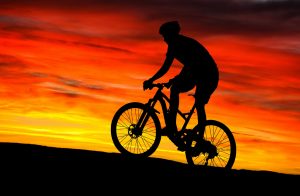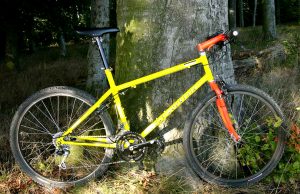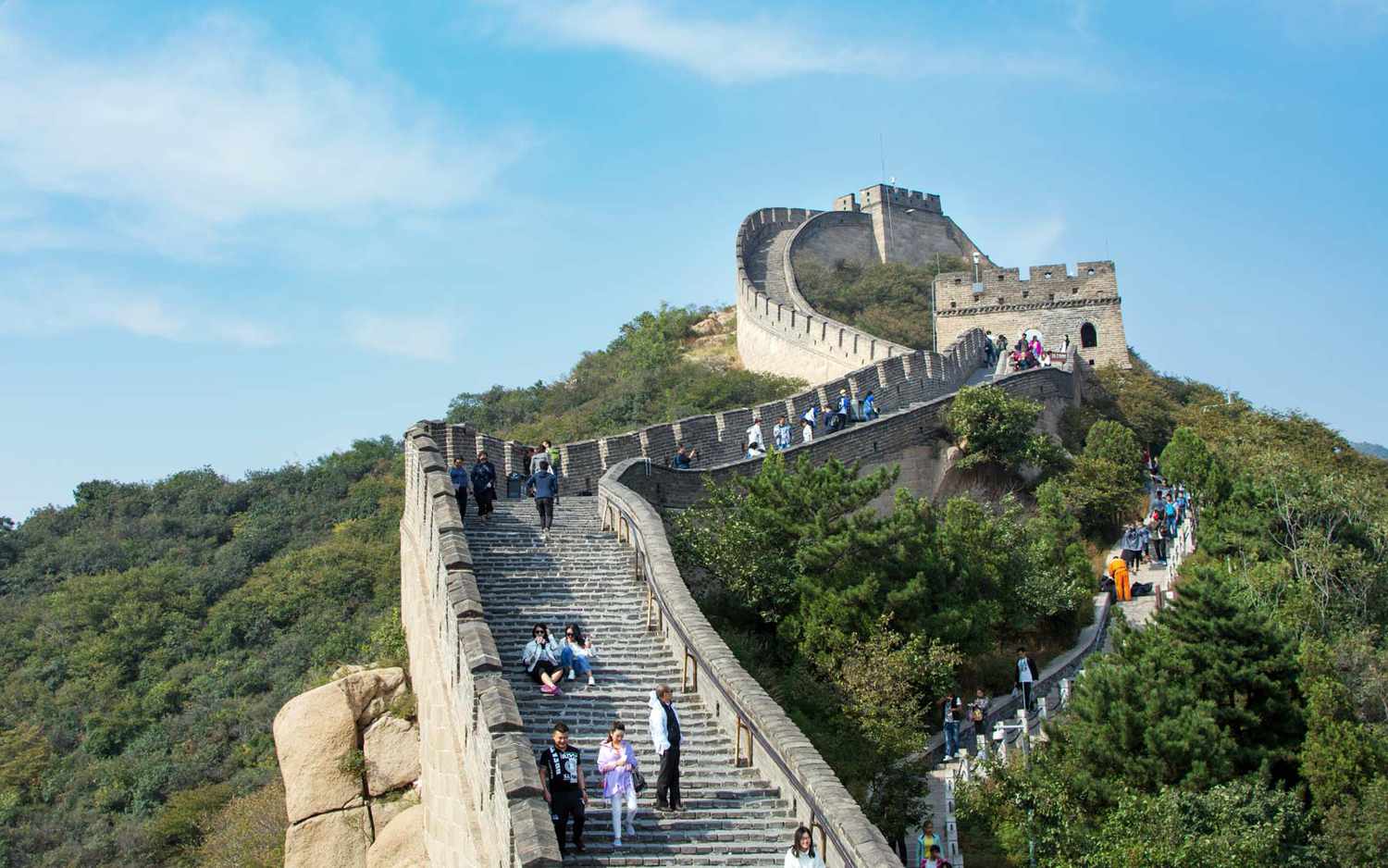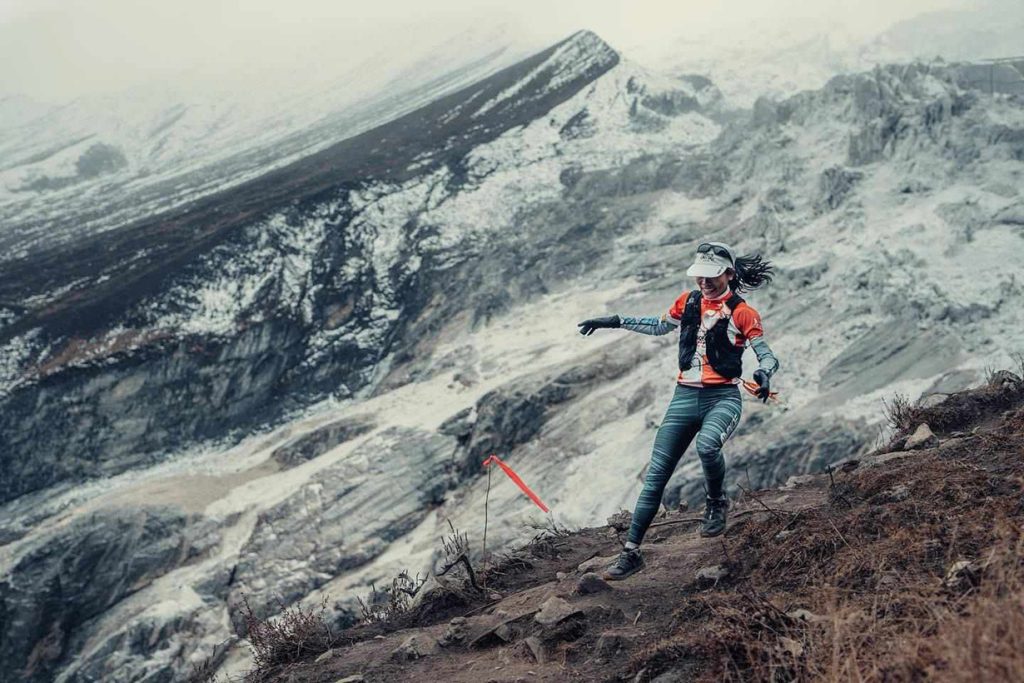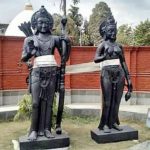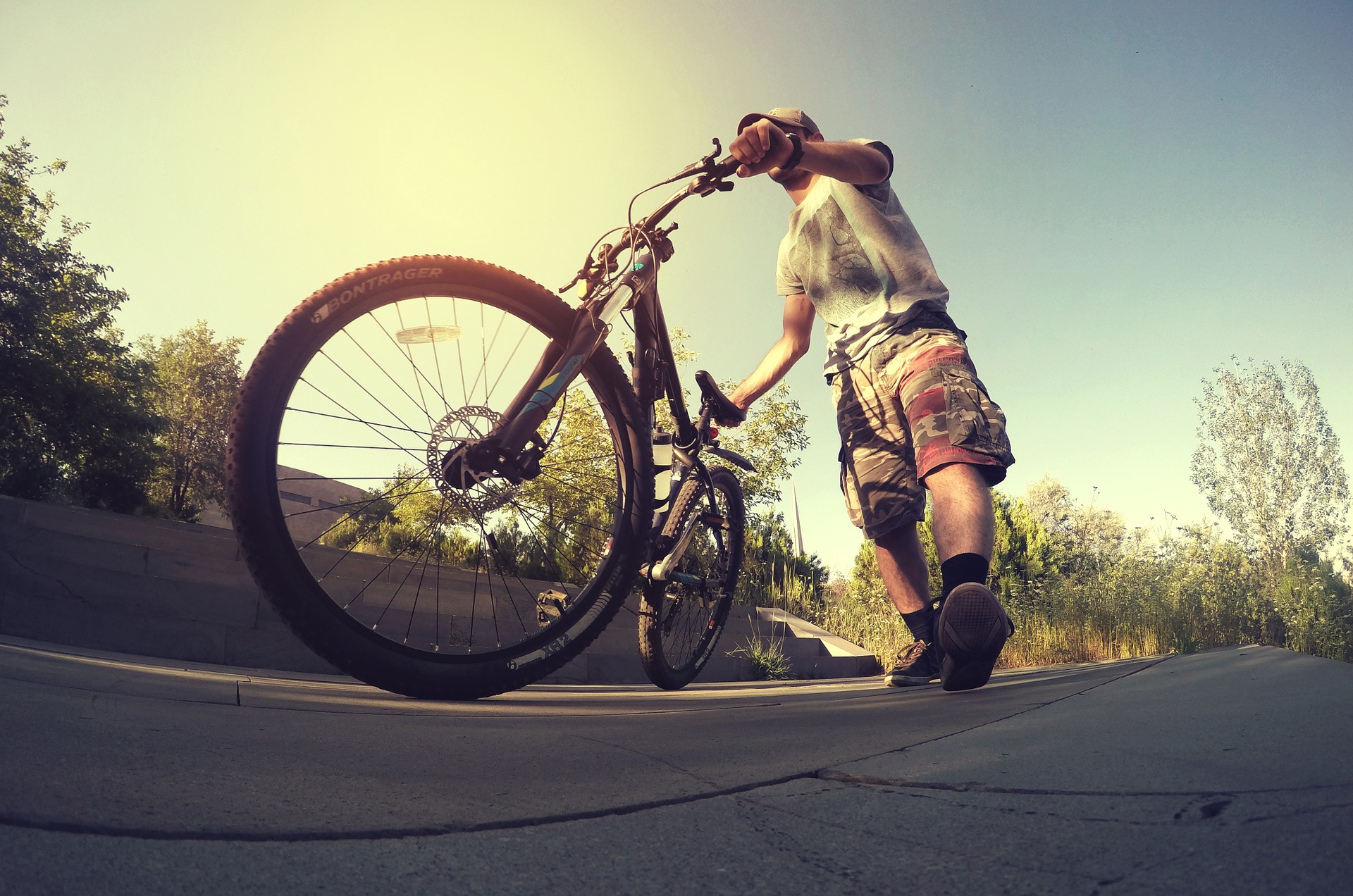
Hello beginners, you followed me through the last two series with basic info on mountain bikes, gears, outfits and tips on how to use the brakes, shift gears as well as mounting, dismounting and a few others. I presume you have had some practice rides done around your neighborhood during this time. Now, it’s time for the real challenge–to do the off-roads and trails. Let me guide you through this final tutorial so that you can progress in course of time to the next or the intermediate level. Here we go!
1.
Relax and stretch
It’s natural for a beginner to get either intimidated or all fired-up on his/her maiden off-road ride. Better keep your excitement or fear within bounds. In simple words, relax and try to build up your confidence.
Since you are a beginner, try some short off-road rides nearest from your house, say about one to a one-half hour long with rests in between. Stay in easy gears, whichever is more comfortable for you to pedal so that your leg muscles do not tire too quickly. With time, you can prolong the ride duration and venture deeper into the countryside.
A word of warning, though: Your early rides are going to cause you for sure saddle-soreness and chafing. That happens to everyone some time or other even with the padded shorts on. You cannot help this annoying experience, only alleviate the pain by applying Vaseline under your crotch.
Before you start your ride, stretch yourself for a few minutes to loosen up your muscles. “It helps a lot to do both a pre-ride and post-ride free-hand warm-up exercise for a few minutes to prevent muscle pulls,” advises Rupesh Man Shrestha, a pro rider and the owner of Epic Mountain Bike, Jhamsikhel, Lalitpur.
Be natural; keep your muscles relaxed and flexible. Steer your bike in a natural flow. Do not exert force as you come across different terrains– some are plain but others can be rocky with stretches of ruts, ditches or even waterlogged potholes if it’s post-monsoon months.
2.
No shame
If you get into a tight spot on the trail such as a steep incline, a deep rut, a slimy trench or an unrideable stretch, just get off your bike and walk it past them. There is no shame in doing that. We did it in our time. A day will come when you will coast through them effortlessly. Walking your bike is an accepted part of mountain biking and there are times when even the pros resort to it during a race.
3.
Look ahead
Look ahead–neither at your front wheel or immediately in front, nor at your feet or pedals. Focus on the trail ahead and watch out for any obstruction or obstacle way ahead so that you can figure out how to pedal past or over it. Be prepared for blind corners. So, a line of sight is important for every rider, beginner and pro alike.
4.
Gear shifting
Keep shifting the gears as you spin along to better understand them and let your intuition guide you. As the terrain changes from flatter roads to inclines or down hills, it will help you shift into a comfortable gear without needing conscious reasoning.
5.
Proper foot placement
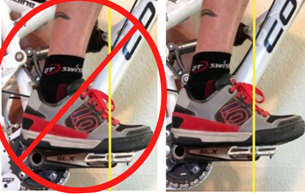
When placing your foot on the pedal (flat pedal), do not put your foot too far forward on the toes (a common mistake committed by most riders). Place your foot on the pedal with the ball of your foot fractionally ahead from the axle of the pedal or the spindle with your heels down. This avoids the shoe sole from sliding while doing the bumpy trail. This method ensures maximum pedal power and efficiency.
When coasting or when you are not pedalling, keep the pedals horizontal and not vertical (another mistake most beginners make). It’s like resting your feet on the pedals normally with your left foot forward and slightly higher. This position prevents you from hitting a rock, keeps your balance when you stand on your pedals and your foot ready for a power stroke.
6.
Going uphill
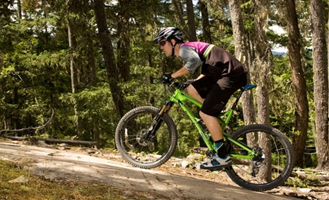
Now, that’s one of the toughest bit for a beginner and kind of intimidating, too. When the climb starts, at first, you are not sure of yourself whether you can make it to the top or not. Do not rush. Shift into a low gear early before the climb begins and try to maintain a steady pedalling motion called ‘cadence’ in order to achieve maximum power.
Most early riders make the mistake of late erratic shifting during climbing, which can be a messy affair and cause load on the gears and the chain–can even break it. It does not matter if you go for the lowest gear if you do not let up on your pedals and maintain a slow but steady pedalling motion.
If the going gets very steep, lean forward and slide your hip to the tip of the saddle to avoid your front wheel suddenly popping up. For better traction, stay seated on your saddle. Drop your shoulders low and forward, and pull down and back on the bars as you pedal. Do not try pedalling in a standing position just to ape other riders. You need to train for that. So, try it in a later stage.
Do not exert yourself too much if you think you cannot go on. Just get off the bike and walk it to the top. There is always the next time . . . and take my word for it . . . you will eventually conquer that steep hill on your second or the third try. That’s how I and my mates fared in our early days.
7.
Going downhill
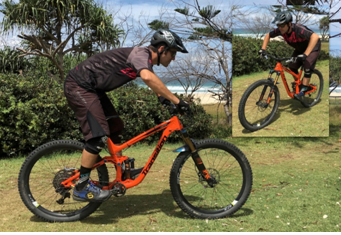
That really frightened me in my early riding days especially when I confronted the ultra-steep ones with all kinds of rocks and pits. For beginners, this can be nothing truer. So, my advice to them is to try some easier trails first.
Going down a hill means you are pulled by gravity, which results in increased speed. With speed and a rocky track, you need to maintain a perfect control and balance. The right posture of your body when going downhill is to raise your butt off the saddle, shift it slightly back with your body lowered to the handlebars. Keep your elbows and your legs slightly bent so that, besides your front suspensions, they too help soak in the bumps and the hits. Stay focused, look way ahead and make up your mind to negotiate down the portion of the track you think would be easiest for you.
“Seated position is wrong when doing downhill. Slightly raise your butt and stand on the pedals, your knees and your elbows bent in an attack position. Put your body weight on the pedals which should be parallel to the ground. Use your index fingers gently on both the front and rear brakes. You can slightly shift your hips back if the descent gets steeper,” advises Shyam Limbu, an ace rider, NCA coach and the Managing Director of Gravity Nepal, a mountain bike store located at Dhobighat, Lalitpur.
Keeping your pedals parallel to the ground (in a 3 and 9 o’clock position) will help you avoid hitting big rocks or catching on some kind of outcroppings like tree roots or stumps. The heels of your sneakers should be dropped to prevent slipping and ready to take in the impact when you brake or hit a bump. The best choice of gear for downhill would be the biggest chainring so that the chances of the chain bouncing off while doing the bumpy descent is less likely.
If the descents are steeper, you can drop your saddle height by a few inches to boost up your confidence and attain a better control.
8.
Cornering technique

When you venture out into the off-roads and trails, switchbacks berms, and off-camber corners become part of them. Consequently, you have to master the cornering essentials. This part of riding can get tricky if you do not handle your bike properly. When you approach a turn, slow down by using both your brakes before you take the bend and not when you are turning and roll through.
Downhill cornering is dicier as gravity pulls you down. First and foremost, you have to control the speed, make long sweeping turns and avoid jerking the handlebars and swerving sharply. Look towards the end of the bend and further along the trail. Your head and shoulders should be pointing towards the direction you are heading and use the brakes before not during the turn.
“If it’s a sharp bend on a narrow trail and you are doing left turn, lower your centre of gravity, bend your knees and arms slightly, lean your bike under you to your left with your pedal raised to 10 o’clock opposition shifting your body and weight to your right pedal and vice-versa,” advises veteran rider Prayash Tamang (also NCA coach and co-partner Trek bicycle shop, Panipokhari, Kathmandu).
A word of advice
There is a saying in Nepal: Ghoda chadne ladchha which translates to, one who rides a horse is destined to fall. Same applies to mountain biking. You will fall off your bike some time or another . . . not once but several times. I had innumerable crashes during my time . . . I still do. That should not deter you from pursuing this great sport and adventure. Even World Champs fall off their bikes!
Now that we are almost done with the elemental skills, let me remind you again that all these skills need honing . . . you have to build them up gradually–and that takes time, patience and a lot of practice before they become second nature to you.
Now it’s time for the little secrets with which you can surprise even the most experienced riders.
- The proper wearing of sunglasses is to put the arms of the specs from outside the straps of the helmet. The reason for this is if you crash, the glasses fly off; but if the arms are under the straps, they get trapped and your eyes can get hurt by the broken lenses. Most riders are unaware of it.
- If a rider is wearing a pair of sneakers, more often than not the laces remain dangling and not shoved into the inside of the shoes. If the laces of the right shoe get trapped into the chainring, you are sure to crash and eat dirt! You can surprise even an ace rider with this info!
Young and strapping beginners, if you are intent on doing serious or hard-core riding and wish to be coached by a professional, Gravity Nepal, located at Dhobighat, besides selling high-end mountain bikes, runs a Mtb clinic to cater for your needs (for more details, call: 5535662/9803661496).
Happy riding! Ride safe and always keep the rubber side down!
Also read:
Taking up mountain biking in Nepal: The first steps
Mountain Biking in Nepal: Know when to brake, how high to saddle







